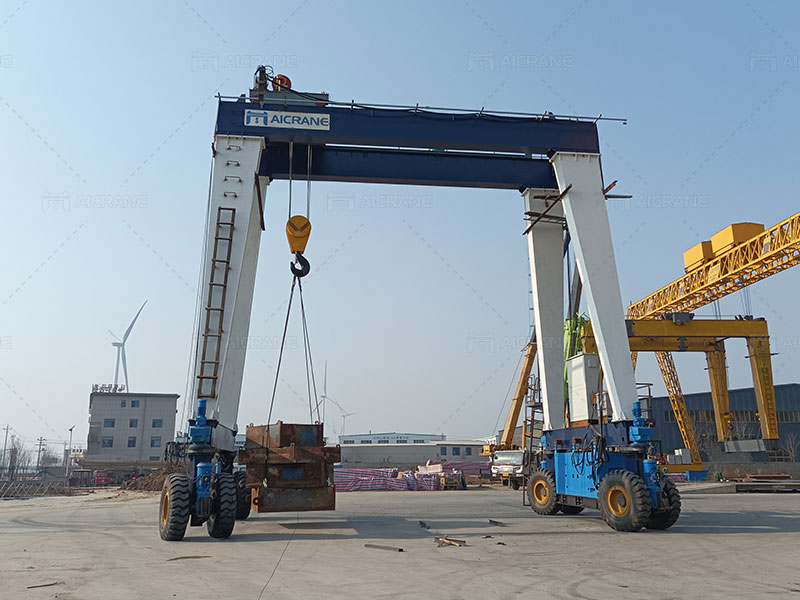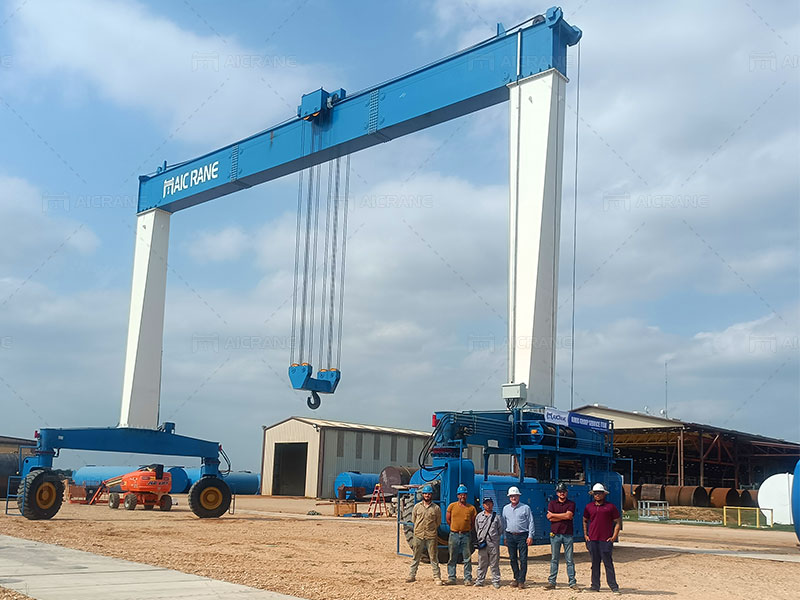In the world of material handling and container movement, efficiency is crucial. As businesses aim to maximize productivity while reducing operational costs, the choice of equipment plays a pivotal role in shaping the long-term financial outlook. Rubber Tyred Gantry (RTG) cranes have emerged as an indispensable solution for container ports, logistics hubs, and warehouses due to their versatility, flexibility, and impressive operational capacity. While the initial investment in RTG cranes may seem significant, the long-term cost savings they offer make them a wise choice for many industries. In this article, we will explore how investing in rubber tyred gantry cranes can lead to substantial cost savings over time.

1. Fuel Efficiency and Reduced Operational Costs
One of the most significant factors in achieving long-term savings with rubber tyred gantry cranes is their fuel efficiency. Traditional rail-mounted gantry (RMG) cranes are often tethered to a specific track system, which can limit their range and require additional infrastructure for operation. RTGs, however, are powered by diesel engines or electric motors and run on rubber tyres, allowing them to move freely and navigate various terrains without the need for complex rail systems.
This mobility results in lower infrastructure costs, as businesses do not need to invest in expensive rail systems and can instead use existing roads or paved areas within their facilities. Additionally, RTGs can be used for multiple tasks across different locations, thus reducing the need for multiple machines and optimizing fleet usage.
When compared to other lifting equipment, RTG cranes are more energy-efficient, with many modern models offering hybrid or fully electric power options. These energy-efficient cranes consume less fuel and have a reduced carbon footprint, which directly translates into lower fuel costs and reduced environmental impact. In regions where fuel prices fluctuate, this can mean considerable savings over the crane’s operational lifespan.
2. Lower Maintenance Costs
Rubber tyred gantry cranes are designed to be robust and durable, capable of withstanding the rigors of heavy-duty lifting operations in demanding environments such as ports and logistics hubs. Their design and engineering have evolved over the years to reduce wear and tear, leading to lower maintenance costs.
Unlike rail mounted gantry cranes, which require regular maintenance of their rail tracks, RTGs eliminate the need for rail inspection and repairs. They are designed to operate independently, meaning that fewer parts are subjected to constant wear, resulting in a reduction in maintenance frequency and overall costs.
Furthermore, RTGs are equipped with advanced diagnostic systems that help detect and address issues early, preventing costly repairs down the line. With regular preventive maintenance, these cranes can operate for decades with minimal downtime, ensuring that businesses get maximum value from their initial investment.
3. Reduced Labor Costs
Labor costs are a significant component of operational expenses in many industries, and RTGs can help reduce these costs in several ways. First, their ability to operate autonomously or with minimal human intervention means that fewer operators are required. Many modern RTGs are equipped with remote control systems that allow operators to control the crane from a distance, reducing the need for personnel to be in direct proximity to the crane. This enhances safety and reduces the risk of accidents, leading to fewer workplace injuries and lower insurance premiums.
Additionally, the versatility and mobility of RTGs mean that they can be used in a wide range of applications. A single RTG can perform tasks across multiple areas within a facility, eliminating the need for specialized machines or additional labor. This streamlined operation ensures that businesses can reduce their workforce size or reallocate employees to other value-added tasks, further driving down labor costs.

4. Increased Productivity and Faster Turnaround Times
Time is money, especially in industries where every minute counts. RTGs are designed for high-speed operations, capable of lifting, moving, and stacking containers with minimal delays. Their ability to quickly transition between different locations within a terminal or yard means that they can handle more containers per shift, leading to increased throughput and faster turnaround times.
The speed and efficiency of RTGs help reduce delays caused by bottlenecks, enabling businesses to optimize their operations and serve more customers within the same amount of time. This increased productivity can have a direct impact on revenue generation, as businesses can process more cargo or materials without needing to invest in additional machinery or labor.
Moreover, RTGs are often designed with advanced automation systems, such as automated stacking cranes (ASC) and automated guided vehicles (AGVs), which further enhance their operational efficiency. These automation technologies can optimize overhead gantry crane operations, improving precision and reducing idle time, which translates to further cost savings in the long term.
5. Longer Lifespan and Resale Value
Investing in RTGs is a long-term commitment, and one of the key benefits is their longevity. These mobile gantry cranes are built to last, with many models offering a service life of 20 years or more when properly maintained. This extended lifespan ensures that businesses can get the most out of their initial investment, spreading the cost of the equipment over many years of service.
Additionally, RTGs retain a relatively high resale value, especially if they are well-maintained. As businesses upgrade their equipment or change their operational needs, they can sell or lease their used RTGs, recouping a portion of their initial investment. The resale market for used RTGs is healthy, particularly in emerging markets or regions with growing container handling needs, which makes upgrading or replacing equipment less financially burdensome.
6. Enhanced Safety and Compliance
Safety is a top priority in any workplace, particularly in environments involving heavy machinery. RTGs are designed with advanced safety features such as load monitoring systems, anti-collision sensors, and emergency stop functions. These features help prevent accidents and improve overall workplace safety, reducing the likelihood of costly workplace injuries and damage to equipment.
By improving safety and reducing the risk of accidents, businesses can also lower their insurance premiums and avoid costly lawsuits or fines related to workplace safety violations. Moreover, RTGs are built to comply with international safety standards, ensuring that businesses remain in compliance with regulatory requirements and avoid costly penalties for non-compliance.
7. Environmental Benefits and Compliance with Sustainability Initiatives
As sustainability becomes increasingly important in global business practices, RTGs offer significant environmental benefits. With their ability to be powered by electric or hybrid systems, RTGs are an environmentally friendly alternative to diesel-powered cranes. Their reduced carbon emissions help businesses meet sustainability goals and align with increasingly stringent environmental regulations.
For companies seeking to improve their green credentials, investing in RTGs can contribute to a positive public image, which in turn can attract environmentally conscious customers and partners. Many governments also offer incentives for businesses that invest in eco-friendly technologies, which can further offset the initial cost of RTGs.
Conclusion
While the initial investment in rubber tyred gantry cranes may appear significant, the long-term cost savings they provide make them an excellent investment for businesses involved in material handling, container shipping, and logistics. From reduced fuel and maintenance costs to increased productivity, safety, and resale value, RTGs offer a range of financial benefits that can help businesses improve their bottom line over time. By choosing RTGs, companies can ensure that their operations remain competitive, efficient, and cost-effective for many years to come.